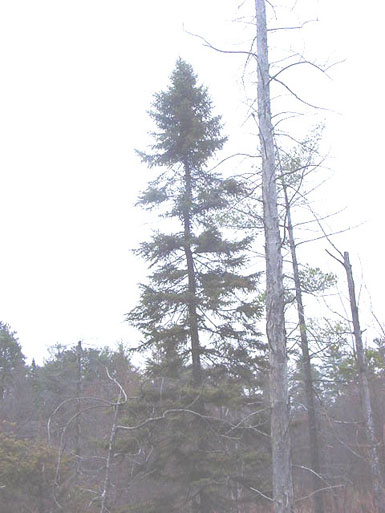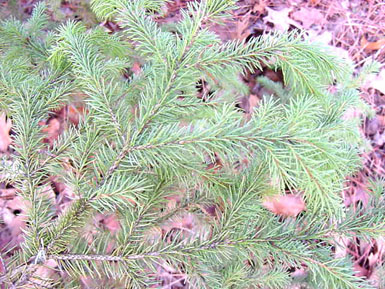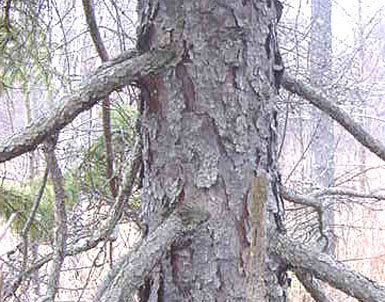Form: This is a small to medium-sized tree reaching average heights of 30-45 ft. It has a conical shaped crown, with irregular clumps of foliage.

Needles:
Arrangement: The needles are arranged equally on all sides of twig and often grow along the main twig toward the bole.*
Length: 1/4-5/8" long.
Shape: 4-angled.
Other: ashy-blue color, soft blunt-tipped needles.

Bark: The bark is thin, scaly and gray or blackish in color.

Cones: The cones are long ovid and purplish in color. They are the smallest of the spruces.
Distinguishing characteristics: This species has softer and shorter needles than white spruce. It also grows on sites with more moisture than white spruce. Most notably it has the smallest cones of the spruces.
Range: One of most widely distributed conifers in North America.
Silvics: This species occurs on wet soils, bogs and grows in pure stands. The lowest branches take root by layering when heavy snow bends branches to the ground.
Ecological and cultural importance: The trees wood is used specialty applications. Moose and deer browse this species when primary food sources are scarce. This species is a primary food source for snowshoe hares.